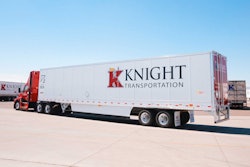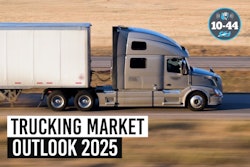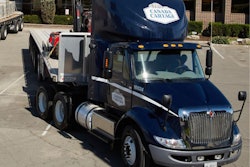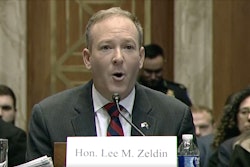President Donald Trump on Saturday announced tariffs on Canada and Mexico, two of the U.S. largest global import and export partners, making good on his campaign promise to tack a 25% duty on goods imported from those countries.
Tariffs are not an uncommon economic tool, but e2open Group Vice President of Product Strategy John Lash noted they are typically used to rebalance the playing field when imported goods have an unfair advantage over similar goods made in the U.S. – for example, if a foreign government subsidized the cost of production of goods that are also produced domestically, making those imported products far less expensive.
The Biden administration rolled out a 100% tariff on electric vehicles manufactured in China, a 25% tariff on lithium-ion EV batteries and a 50% tariff on photovoltaic solar cells. A 50% tariff on semiconductors made in China goes into effect this year. Trump on Saturday also added a 10% tariff on China.
Trump's new tariffs, however, are more punitive in that they seek to pressure Canada and Mexico to act on illicit drugs and illegal immigrants crossing the north and south U.S. borders.
"This is the parents saying 'I'm going to turn off the WiFi if you don't clean your room," added Tom Perrone, senior vice president of global professional services at Project44. "[Trump] wants fentanyl and illegal immigration stopped and they're using tariffs to do that."
Lash noted it's likely Canada and Mexico each respond in kind with tariffs of their own, sparking a bit of a trade war. Mexico in 2023 passed China as the U.S.'s largest import/export market. Canada was the top export market for U.S. goods last year, exported goods to last year, ahrad of Mexico and China.
The Trump administration Saturday did levy a lower tariff (10%) on imported Canadian crude oil, which represents 80%-plus of U.S. crude imports. Canada is also a major trade partner for lumber and various agriculture products. Mexico too is an important crude oil market for the U.S., along with agriculture and automotive manufacturing.
Canada, Mexico and China account for 42% of the almost $3 trillion of goods the U.S. imported last year.
Trucking implications
Trucks move 85% of goods across the southern U.S. border and 67% of goods across the northern border.
American Trucking Associations President and CEO Chris Spear noted his concern that these tariffs could stifle a trucking recovery that is still in its infancy stage by decreasing freight volume and increasing costs for motor carriers.
"A 25% tariff levied on Mexico could see the price of a new tractor increase by as much as $35,000. That is cost-prohibitive for many small carriers, and for larger fleets, it would add tens of millions of dollars in annual operating costs," he said.
Spear added that efforts to fight drug and human trafficking have long been priorities of the trucking industry, and the industry supports policies "that will secure our borders and protect legitimate trade," he said, "but we also recognize the unintended consequences that substantial tariffs could have over the long-term, including higher consumer costs on the wide range of goods that cross our borders by truck, including food, automobiles, televisions, computers, furniture, and other key manufacturing inputs."
Getting ahead
A survey by DP World and Economist Impact noted businesses are either diversifying their supply chains (43%) or building up inventories to get ahead of tariffs (20%), with 37% saying both are equally effective.
"We started seeing front-loading of inventory in early November," said Paul Brashier, vice president of global supply chain for ITS Logistics. “It was primarily clothing, retail goods, auto replacement parts and critical items used in manufacturing."
Companies should prepare for the potential of a front-loading event similar to 2018, disrupting transpacific trade lanes from Asia into North America, Brashier added.
A new report from Gartner said to use tariff volatility to potentially gain a competitive advantage. Analysts advised against rushing into changes too quickly but also cautioned about the dangers of inaction or delayed responses.
Planning ahead
Brian Whitlock, senior director and analyst at Gartner, advised that fleets should evaluate both the direct cost implications of equipment and parts purchases and the broader economic effects of tariffs, such as reduced demand due to retaliatory measures.
“Cross-border truck movements could be suppressed,” Whitlock pointed out, making it crucial to incorporate those factors into planning decisions.
It’s also vital to proactively engage with suppliers to understand their strategies for handling tariff-related cost increases, he said.
“Don’t accept cost increases straight away,” Whitlock said, adding that companies should explore potential mitigation tactics such as price negotiations or cost-sharing agreements with manufacturers.
It’s also crucial to separate base prices from tariff costs, he pointed out. This ensures that if tariffs are decreased or removed, the additional costs can be adjusted without impacting the core price of goods.
Instead of scrambling to respond to tariffs and global supply chain volatility, Richard J. Mansilla, vice president of global supply chain for Wabash, said they made the strategic decision years ago to prioritize domestic partnerships and building a U.S.-based supply chain.
“Today, with more than 95% of our Tier 1 supply chain sourced domestically, we’ve not only reduced risk but also positioned our customers to avoid unnecessary costs and disruptions,” Mansilla said.
Leveraging AI platforms to ensure accurate ETAs and route optimization is also critical, said Perrone. Have a response plan on various scenarios, he said. Consider the effects of regionally based tariffs, tariffs that impact only certain commodities and goods, or tariffs for goods hauled through cross-borders to mitigate disruptions.
“Do not count on a single-outcome scenario," Perrone said. "Any imposition of taxes and tariffs will likely incur an immediate legal challenge and associated delays."










